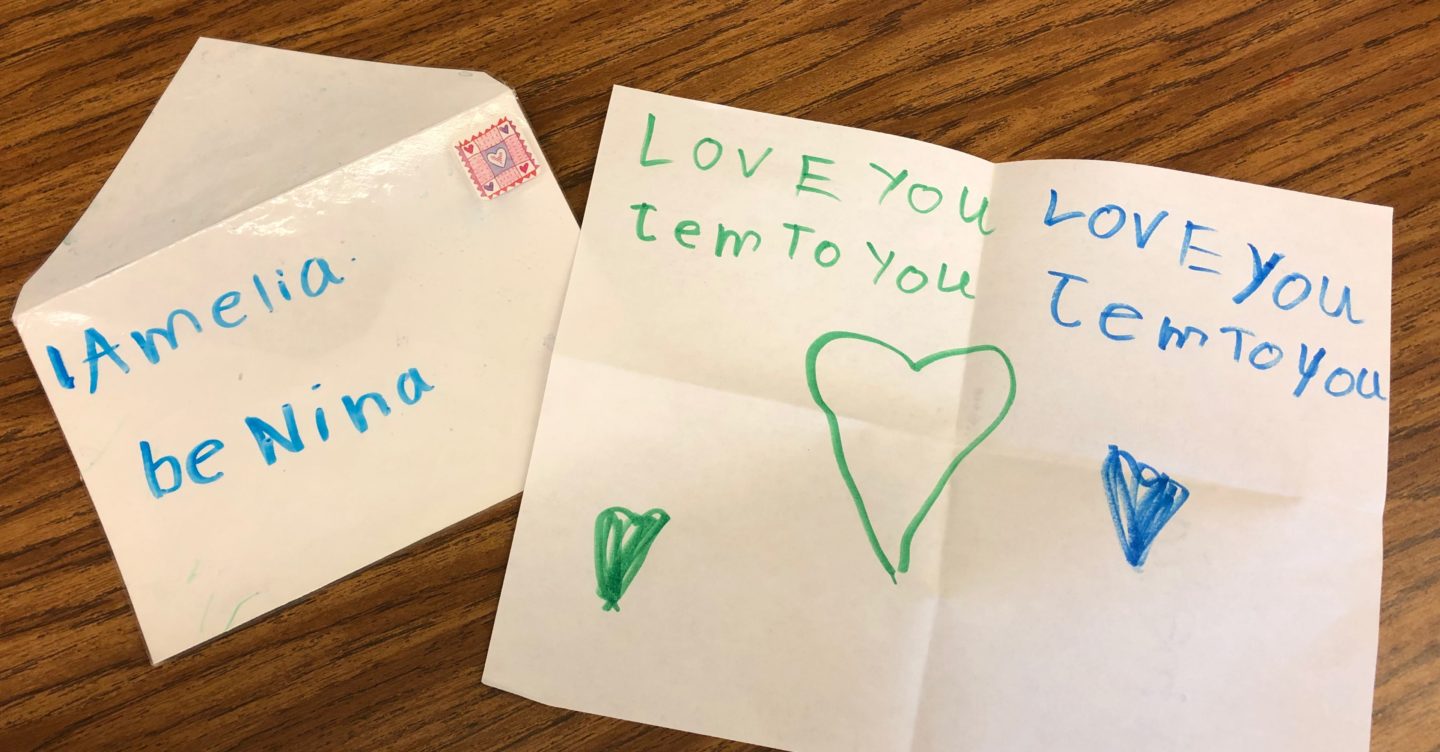
Post Office Play Centre (Part 2)
How I introduce a new play zone is key if my hope is that the learners will engage in French. I like to schedule the play time very early in the day if my hope is that some kids will choose to play in French – this is cognitively challening work! It should not be reserved for the end of the day when children are tired.
I like to schedule the play time very early in the day if my hope is that some kids will choose to play in French – this is cognitively challening work! It should not be reserved for the end of the day when children are tired.
When they enter the learning environment, most learners are immediately interested in the new invitation. I have star markers next to this play zone in the sign-up chart, so it is clear from the get-go that this will be a French-full play zone. I start at the carpet with the book « Le gentil facteur » by Janet and Allen Ahlberg. This is a very long story – we will not read the whole thing. In fact, we will only read the first 3 letters. While we read each page, I gesture for the class to say « Regarde l’enveloppe » (turns page) « Ouvre l’enveloppe et enlève la lettre. » Once we have done this for all three pages (and I have read the first three letters). I close the book, and gesture for the class to « maintenant tout le monde se lève, s’il te plaît cherche une chaise et assis-toi près de la zone 2 »
Once everyone is settled near to the play zone, I gesture « Regarde le bureau de poste » (x3). « Voici les enveloppes. (lifts up the basket of envelopes) et regarde les timbres (touches the stamps). Voici la caisse (touches the cash register). « Tu peux acheter une enveloppe et un timbre si tu veux donner une lettre à ton ami »
« Maintenant, aide-moi. Je sais que j’ai 8 timbres, mais il y a seulement 5 timbres ici. S’il te plaît, regarde les enveloppes et dis moi s’il y a un timbre sur l’enveloppe ou s’il n’y a pas un timbre sur l’enveloppe. » Now I hold up the first envelope (there is no stamp). I gesture to support everyone to say « Il n’y a pas un timbre sur l’enveloppe. » Second envelope, same thing. Third envelope, « Il y a un timbre sur l’enveloppe! » This is undoubtedly very exciting for the learners. I use interactional feedback to correct any errors as I guide my learners to use the new language as we work through these beginner sentences. « Maintenant, qui veut mettre le timbre ici? » (points to the felt page where they are stored). « Je choisis mon ami ____. » (The learner will respond) « Je veux mettre le timbre ici. » (Merci). « Maintenant, aide-moi à compter les timbres. » « Combien de timbres est-ce que je cherche? » (choose a learner to answer, always requiring a complete sentence for an answer).
Next, we keep looking for stamps. Everyone is encouraged to speak the sentences to respond. The repetition allows the learners to build confidence with the new language. I am sure to include some envelopes that haven’t been correctly erased. When I hold one up, the learners will likely tell me « Madame, problème avec ça. Message sur ça! » (or something similar). This is where I will draw attention again to the address. I will ask « est-ce que je peux effacer ça avec une gomme à effacer? » (Non, Madame! Ça efface pas une gomme) This is a complex sentence which the respondant had to formulate themselves and will likely contain several errors. There are many possible way to provide feedback here. I chose to respond with « Oui, je dois effacer ça avec une serviette en papier et un peu de l’eau ou beaucoup de l’eau? » (Here I will reinforce the need for only a tiny bit of water). Then I ask « Qui veut effacer ça avec un peu de l’eau? » (Je choisis ____.) Volunteer will say « Je veux effacer ça avec un peu de l’eau. » Now I will gesture « Mon ami ___ marche là bas et efface l’enveloppe avec un peu de l’eau. » Then I keep showing envelopes following the aforementioned script until we have found all 8 and checked all of the envelopes.
When we have finished this task. I was ask the class to put back all of the chairs and to come back to the carpet. We will read one more letter from the story. This time I will emphasize the word « timbre » as well as envelope. Next, it will be time to transition (it could either be a transition to play or to a snack).
The first time I read actual lesson scripts, I was a pre-service teacher and I thought it was ridiculous. Why bother to write everything out like that?! Now I get it. As I come to better understand the role of repetition in language teaching and learning, it all starts to make sense.
